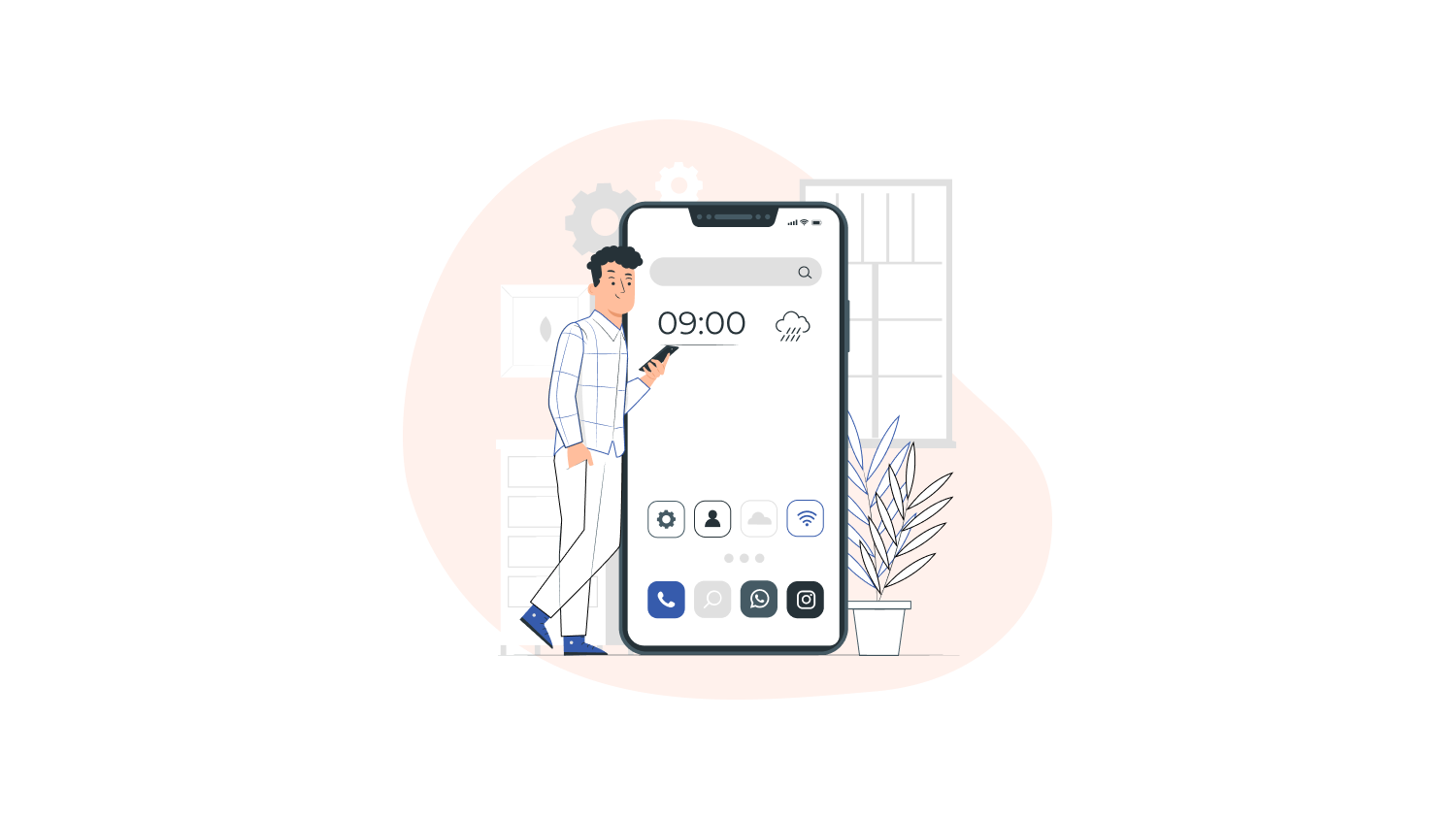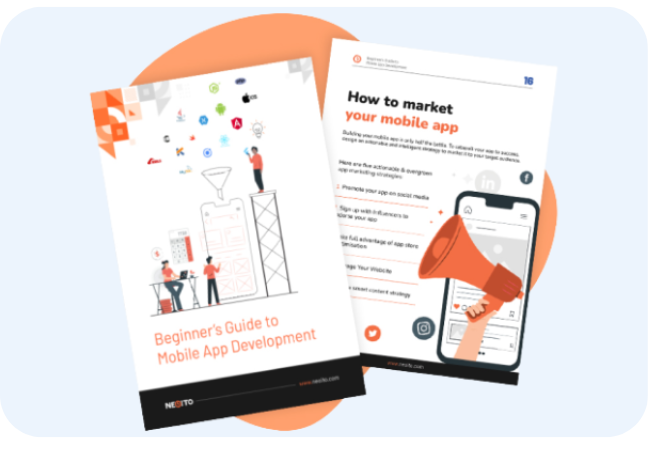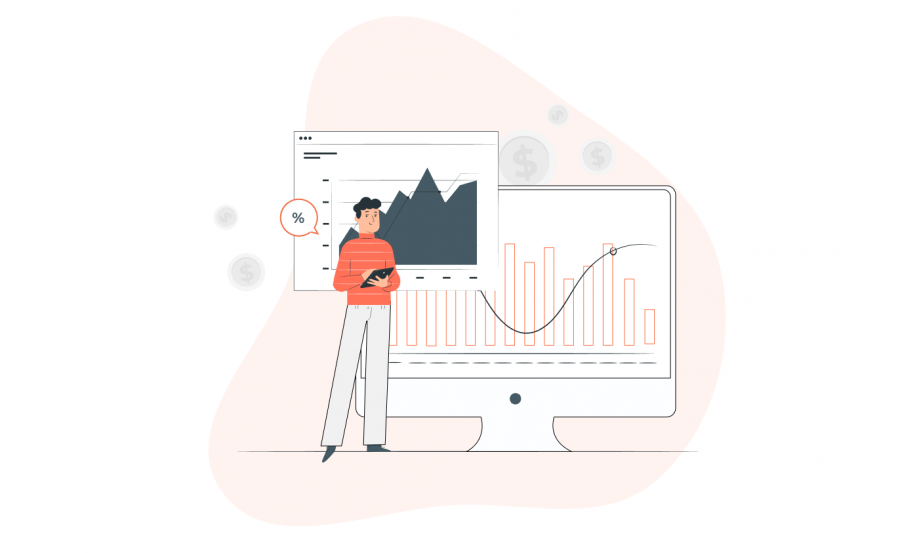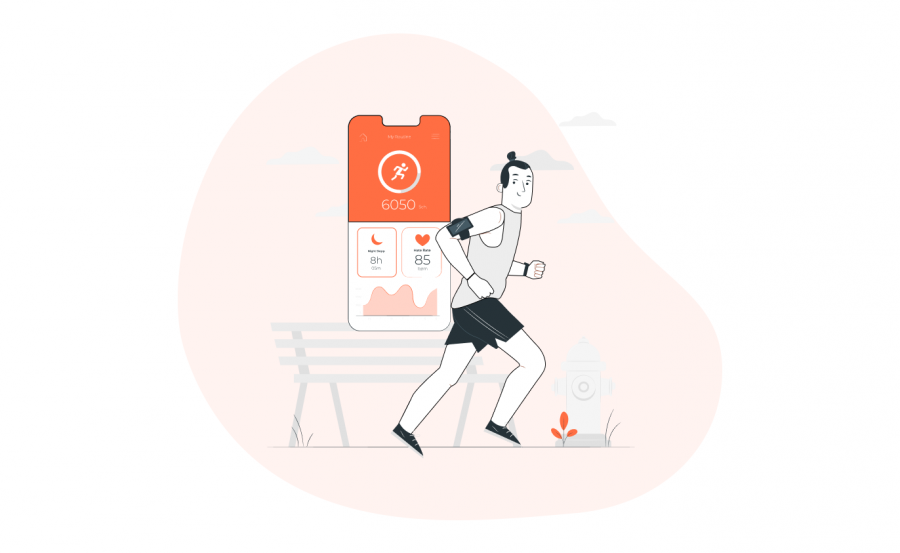Mobile apps are the one place where people spend most of their time on their mobile devices. Statistics say that people like to use mobile apps rather than websites on their smart devices. Customers expect to have an app for every business to make their lives easier.
There are currently 7.26 billion mobile phone users worldwide (including both smart and feature phones). There are many advancements in the digital world like Artificial Intelligence, Virtual Reality, Augmented Reality, etc. and all come inside the apps. So the mobile app industry is not going backwards in the near future.
However, there are also more than 4 million apps on Play Store and App Store combined. So you need to find and give a perfect app solution to your users to survive the competition.
If you have an app idea and are thinking of building your first app, congrats! Creating your first mobile app can seem like a tremendous task.
So, here comes the question: How to create an app? With the right tools and resources, it’s easier than you think!
This blog will guide you through 9 important steps of developing your mobile app. Also, you will get bonus FAQs at the end, where you will find clear answers to your questions.
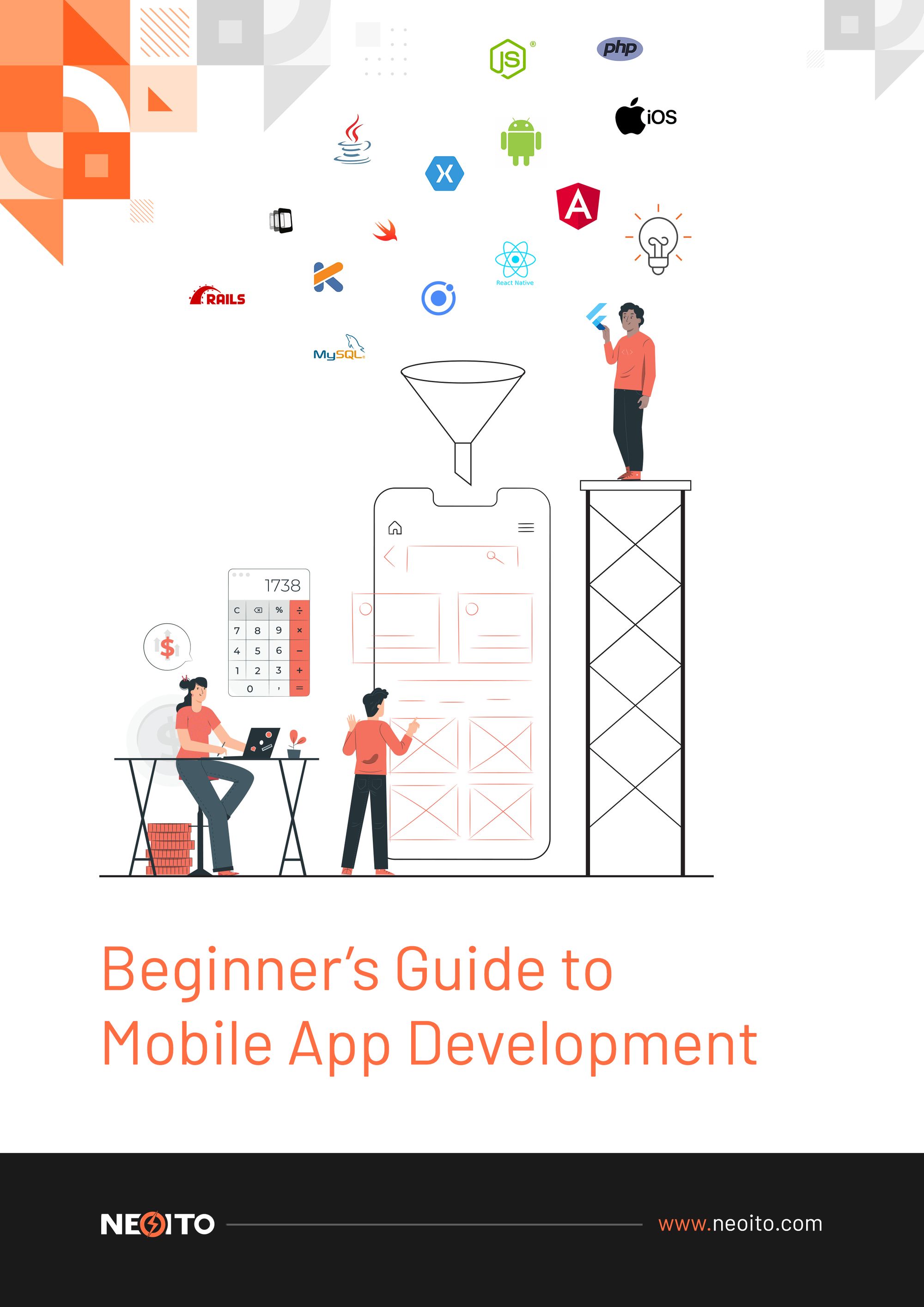
Free Download
A Complete Guide to Mobile App Development
9 Key Steps to Build an App
Before creating a successful app from scratch, you need to be familiar with all the steps involved in developing an app. Also, you have to keep an eye on recent trends in app development.
We have listed 9 easy and actionable steps that will help you create a high-performing app. Let’s dive in.
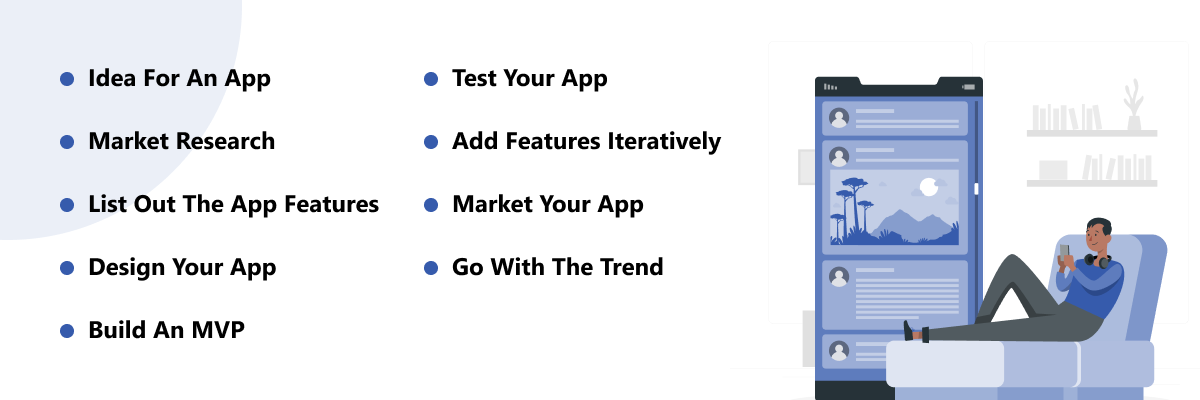
1. Come Up with an Idea for an App
You can skip to the next part if you already have an app idea. If you are still looking for an idea, let’s discuss some strategies to generate an idea for your app.
So while searching for a good app idea, your idea doesn’t have to be 100% unique. Many successful apps in the app market is another form of an existing app.
Raise from your own pain
Suppose you find some difficulty to do a specific task, and you feel if there is an app to do that, it can be a lot easier. Now, you have an idea for your next app.
Always look around and in yourself; what are the difficulties you and people around you face. Try to find out if the problem can be solved by developing an app. Even though it’s simple, it may potentially grow into a billion-dollar business.
Let’s say you can write a note for yourself on a sticky note, which is an easy task. Also, making it digital is not a great idea. But Evernote saw people like to see the note for themselves on their mobile device and added a notification to that feature. So you won’t even miss seeing the notes. Boom, the idea became successful.
Never ignore the minor problems; you don’t know what impact they may create.
The mix-up
You are mixing two or three ideas into an app.
For example, you plan to post a photo collage on your social media. While selecting the photos, you find some images need edits, so you use a photo editor to edit your picture and then a collage maker to create a photo collage.
This is tedious. What happens if a collage maker also has a photo editing option while creating a collage. It will be a fantastic combination of ideas.
Look into the apps you use frequently and try to find connections where you feel these two or three apps can be one app.
An enhanced version of the already existing app
Ever felt the app you are using could be improved? Then you possibly have an app idea.
You can roll up your sleeves to build a better version of an existing app.
Start researching the app market, find apps with low ratings, and look at user reviews. You will get an idea about the areas of improvement.
An excellent example of this type is Telegram. Telegram hit the market where Whatsapp was already dominating. But Whatsapp has a lot of restrictions like limits in video lengths, the number of members in groups and more.
Telegram covered the flaws of Whatsapp. Now Telegram has more than 400 million users. Telegram groups can cover upto 200k members, and cloud storage is a lot more than Whatsapp.
Once you find an idea, create the goal and objectives of your app.
-
-
- What are the pain points you are going to address?
- Who will be your target audience?
- What are the metrics you are going to consider?
-
Also Read: 10 Easiest Ways to Find Winning Product Ideas Every Time
2. Do the Market Research
Once you find the app idea and set the goals, the next important step is market research. Here are some methods to do market research.
Theoretically, you may feel your app idea is great, but you need stats to confirm it. So the research will be the core part where you identify your idea as the needed one for users.
Here is a list of questions you need to answer in the research.
- Who will be your target audience?
- Demography of your target audience.
- Who will be your competitors?
- What are the drawbacks of your competitors?
- What are your customers’ pain points while using your competitor’s app?
- What is the price range of your competitors?
Some ways to do your market research
- Begin with surveys
- Conduct interviews with your target audiences
- Analyse your competitors
Read more: How to Do Market Research for a Business Startup?
3. List Out the App Features
After completing the research, you will have a good idea about your niche market.
With data in hand, we move on to give shape to your dream. Before creating the main app, we will start with a prototype.
The prototype is the visual presentation of how your app will look and work. So here we select the features needed for your app.
List out all the features you want to add to your app. Then distinguish the features between need and want.
The features in the need section will go straight to the first version of your app. The features in the want section may be included in the future to improve the user experience.
The basic features to be included in the early stage of app development are:
- Signup or Sign in
- Login
- Menu
- Logout option
- Dark mode
- Push notifications
- Embedded GPS
- Calendar
- Search bar
- AI chatbots
- Shopping carts
- Video or any other content spots
- Your unique feature
4. Design Your App
After listing the features, you have to design your app.
While designing the app, the primary focus has to be on the user experience. The main reason many apps fail is poor user experience.
Tools for designing the mockups for your app:
- Sketch
- Figma
- Invision studio
- Zeplin
- UXpin
- Adobe XD
Provide a smooth on-boarding experience. If you provide a terrible user experience during on-boarding, then the app’s life on the mobile device will be short.
Provide trimmed content on your app. Try to follow the same colour scheme and fonts throughout the app. Distinguish the buttons and the content.
5. Build an MVP
MVP stands for a minimum viable product. So before you build a market fit product, you create an MVP which will be the basic version of your app.
MVP only has the essential features and will be used for testing among early adopters. Once you launch the MVP, you will be able to collect feedback from the early users and iteratively add the solutions to the feedback in the following updates.
Before developing the MVP, you have to choose a development path. Based on your app’s requirements and budget, you can select a framework to build your app.
Also, consider developing the app for both Android and iOS. So it is wise to select frameworks like React Native, which gives the liberty of coding once for both platforms.
If you have a limited budget, there are options like drag and drop app development tools. With the help of these tools, you can quickly develop apps using a no-code or low code approach.
- Appy Pie AppMakr
- Buildfire
- Zoho creator
- Bubble
- MobiRoller
- Bizness app
Also, you can approach product development companies who will develop your app with minimal involvement from your side so that you can concentrate better on other areas like marketing, branding and more.
If you are from a non-technical background, choosing a product development company to build your app is sensible.
Also Read: 10 Best Ways to Start a Tech Startup as a Non-Technical Person
6. Test, Test and Test Your App
Testing is one vital activity you can never skip even if your app becomes successful. Your app has to go through all types of testing to ensure it has no bugs and UI/UX design is flawless with a great user experience.
List of testings to ensure your app works well.
- Usability Testing
- Performance Testing
- Security Testing
- Interruption Testing
- Manual Testing
- Compatibility Testing
- Localisation Testing
- Functional Testing
- Installation Testing
- Automation Testing
If you sidestep the testing stage, your app may end up in real danger. Many cyber risks highly threaten the digital world, so never skip any part in testing to ensure better security and usability of your app.
Look into our blog mobile app security checklist to make your app more secure.
7. Add Features Iteratively – Make Your App Market Fit
So you have successfully developed your app MVP. The next step is to release the MVP app in the app market.
Once you release the MVP, you will find early target customers to use your app. The earlier target customers will be your friends and early adopters.
In this stage, you have to be more careful; you will start to get feedback from the people who use the app for the first time.
Try to make a mindset that you take all the feedback with a positive attitude. Because you put a lot of effort into releasing the app’s MVP, and if someone says your app is not good, it will be painful, but try to find the mistake and resolve it.
Have a separate doc or sheet to enter your feedback and the solution; how will you address it?
There will be some feedback that you can’t address. Leave it and move forward.
Collect feedback with every update; once you find your app market fit, go to the market with a banging marketing plan.
8. Market Your App
Once you hit the app market, now is the time to hit the business market. Marketing your app and taking it into the hands of your target customers is a tough task.
With good marketing plans and strategies along with the time it happens. In the digital era, you may find many different marketing options. Try to find which marketing channel most of your target customers are in.
Different types of marketing:
- Traditional marketing in the form of newspaper ads and billboards
- Digital marketing channel focuses on social media platforms where your customers hang out
- Try to get your app featured on Apple’s App Store.
- Do paid and free promotions on different social media channels.
- Do influencer marketing.
- Create content on your website.
- Offer referral bonuses.
9. Go With the Trend
There will be new trends that come every day in this digital era. If you plan for success in the long run, you have to go with the trend.
Once you launch the app in the stores, address both positive and negative feedback. When a new technology emerges, evaluate the technology whether it gives any improvement to your users.
Let’s say the inclusion of AI is mandatory in all apps nowadays. But the apps which have adopted AI at the early stage of AI evolution have become pioneers.
So always go with the trends.
Check out: Top 10 Advantages of Artificial Intelligence in Mobile App Development
Conclusion
Even if you have or don’t have a technical background, you can create an app. And the above mentioned 9 important steps will help you build successful apps. Also, bear in mind that you always need good technical guidance while creating your app from the ground up.
Read the blog how to find the right technical support [Practical Steps] and understand the important things you need to keep in mind before you hire technical support for your successful app development.
Bonus FAQs
1. How much does it cost to build an app?
The cost of building the app depends on the features, the time duration, and the type of app you plan to develop. If you have a lot of features and high-level security for fund transactions, you will need a big budget.
2. Should I create an app for both Android and App Store?
More than 1 billion people use iPhones, and more than 2.5 billion people use Android mobiles worldwide. You can’t ignore either, so building a hybrid app for both the Android and APP Store is advisable.
3. Should my app comply with PCI regulations?
If your app has features like using credit card transactions, then your app must comply with PCI regulations.
Do a PCI security checklist while testing your app.
4. Should my app comply with HIPAA regulations?
If your app collects personal data like date of birth, medical records, then your app must comply with the HIPAA regulation. Make sure to check for HIPAA regulation while testing your app.
5. Can anyone create an app?
If you have the technical and coding skills, you can simply sit and build your app. If not, you can develop your technical team or hire freelance developers and designers to build your app. Another easy way is to hire a product development company to develop your app. Anyway, you can turn your idea into an app with a reasonable budget and resources.
6. How long does it take to create an app?
Time taken to build an app depends on the app’s features and size. The average time may be between 3 months to 2 years to develop a full-fledged app.
7. How to find app developers?
You can find app developers in three ways.
- Hiring in-house developers. It takes time and resources to find a perfect fit, but they will be working with the company.
- Hiring freelancers. Take time to find good developers, cost-effective for small budgets.
- Outsourcing your development phase. Gives access to a pool of developers and talents, involvement of yourself in the project will be comparatively low.
8. How do you build an app from scratch?
Start from validating your idea and travel through design, development, testing, launching and marketing. All you need is the right talent, skills and development strategy to develop an app from scratch.
9. What technology should I use to build my app?
If you plan to develop a hybrid app for both Android and iOS, you can rely on React Native or Flutter. Some other technologies used to develop mobile apps are Python, Java, Swift, Kotlin and more.
10. Should I outsource my app development project?
There are a lot of advantages to outsourcing your development project. If you don’t have a technical background or need more time concentrating on the other business area, outsourcing will be a good option. Also, outsourcing will provide you with a pool of talents to choose from with prior experience in project development.
11. How do I maintain my app on a day-to-day basis?
Mostly you have to provide regular updates comprising enhanced improvement in your app. You can utilise user feedback for better upgradation. Most of the app maintenance involves bug fixing, new feature release, enhancing user experience, operating system updates.
12. How do I market my app?
- Use SEO marketing. Paid and free.
- Try Social media paid campaigns.
- Give referral bonuses.
- Create ads on the web pages where your target audience spends a lot of time.
- Host a contest or giveaway.
- Be active on social media.
If you have any further questions, Book a free Consultation with our experts!
